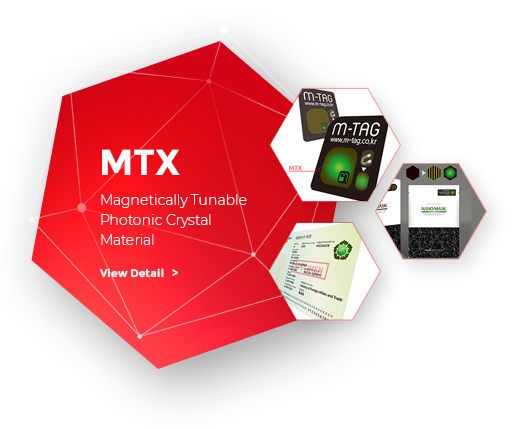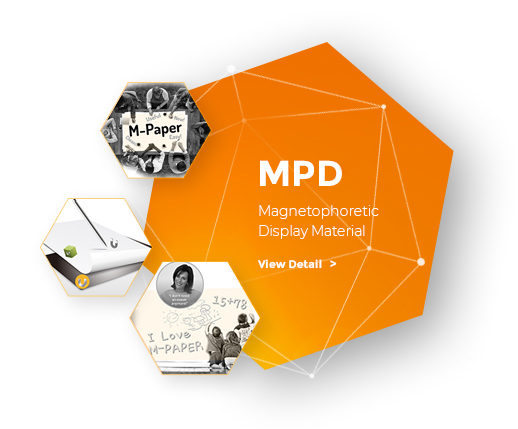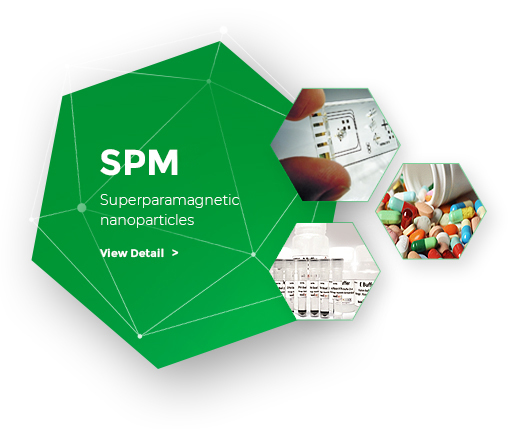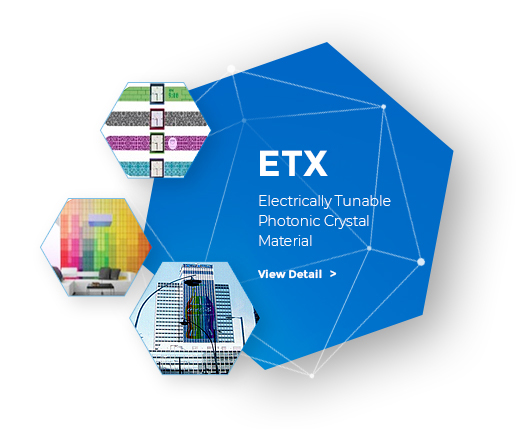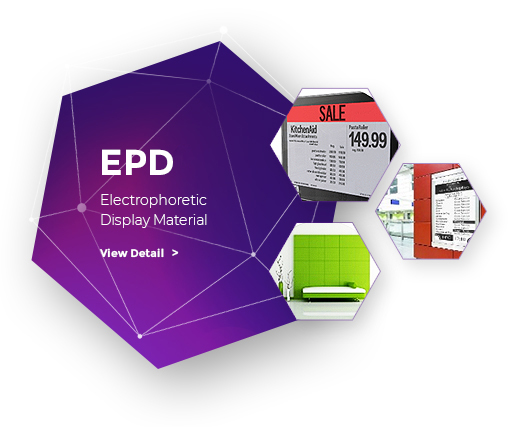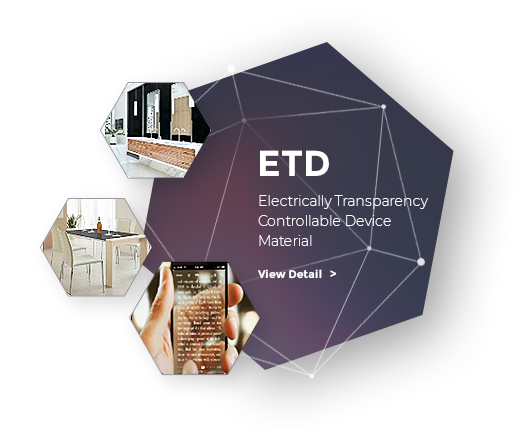TECHNOLOGY
NANOBRICK has acquired six core nano technologies that can generate and control nano structures through the ACTIVE NANO-PLATFORM which was the core foundation to achieve innovative nano materials and functional applications.
ACTIVE NANO-PLATFORM
The nano platform is the methodology of nano structure formation. By utilizing the characteristic of various materials, new nano materials can be materialized to change its color, pattern and transparency by external signals or stimulus.
Based on the active nano-platform, we have developed the innovative new materials that can control color, pattern and transparency by the magnetic and electric signals directly to nano particles. Based on the accumulated technological know-how, we have achieved the mass production system for new nano materials.
Moreover, we have launched various applications using these new nano materials to ensure market validation and reliability. We are also systematically preparing for the development of innovative products beyond our imagination with global customers.
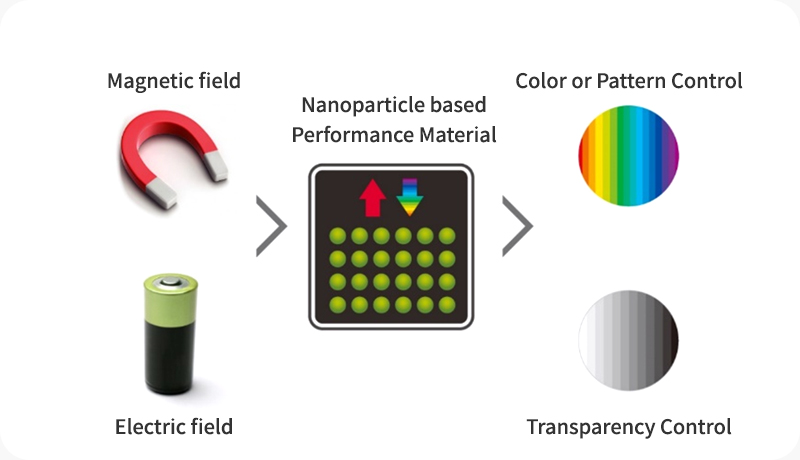
Six Core Technologies of NANO-PLATFORM
NANOBRICK has acquired six core nano technologies, inspired by mother nature.
The Company has developed innovative nano materials: the color changeable photonic crystal nano technology was developed by applying chameleon’s color formation according to the surrounding and the transmittance nano technology was motivated by implementing a camouflage way of octopus.
The Company has endured endless innovation effort of R&D to accomplish new nano technologies that can be controlled by the external magnetic or electrical signal to change in color, pattern and transparency. Therefore, the Company has obtained various intellectual properties in Korea and overseas.
The Magnetically Color Changeable Photonic Crystal (MTX) material allows to change various colors by the magnetic field.
The core technology of NANOBRICK is designed for formed nanoparticles by photonic crystal that allows to carry out full colors in accordance with the intensity of the magnetic field along with a method of array and distance adjustment.
Magnetophoretic Display Material (MPD) technology applies to make flexible and elastic polymer capsules that contain uniformly dispersed magnetic nano particles in fluid. This materials can be manufactured in a writable and erasable flexible film that can replace conventional white board or black board. This environmental friendly material is suitable for clean rooms because it does not generate any dusts or harmful substances.
Superparamagnetic (SPM) material upholds strong magnetic properties only when magnetic field presences. This technology enables to separate and purify targeted substances by applying targeted functional group evenly coated on the surface of nanoparticles.
ETX is an electrically tunable photonic crystal material technology that contains dispersed nanoparticles which are finely controlled by the electrical signal to display variable colors in all areas of visible light.
EPD is electrophoretic displayable material technology that controls uniformly dispersed nanoparticles of low dielectric medium with different colors. Depending on the external power signal, charged nanoparticles with different colors move to the top or bottom of the fluid to convey the corresponding color.
ETD is developed based on an electrophoresis principle to control transmittance by the external electrical signal. This innovative technology enables negatively charged black nanoparticles in a transparent fluid to control the position of nanoparticles to change the level of transparency by the electrical signal.
IP Status
NANOBRICK has secured the core technologies of the cutting-edge level in the industry and these advanced technologies and outstanding qualities are recognized and protected by the worldwide patents and certifications.
-
Patent Application
264Patent Registration
75 -
Utility Patent Application
15Utility Patent Registration
12 -
Trademark Application
57Trademark Registration
40 -
Design Application
18Design Registration
17


